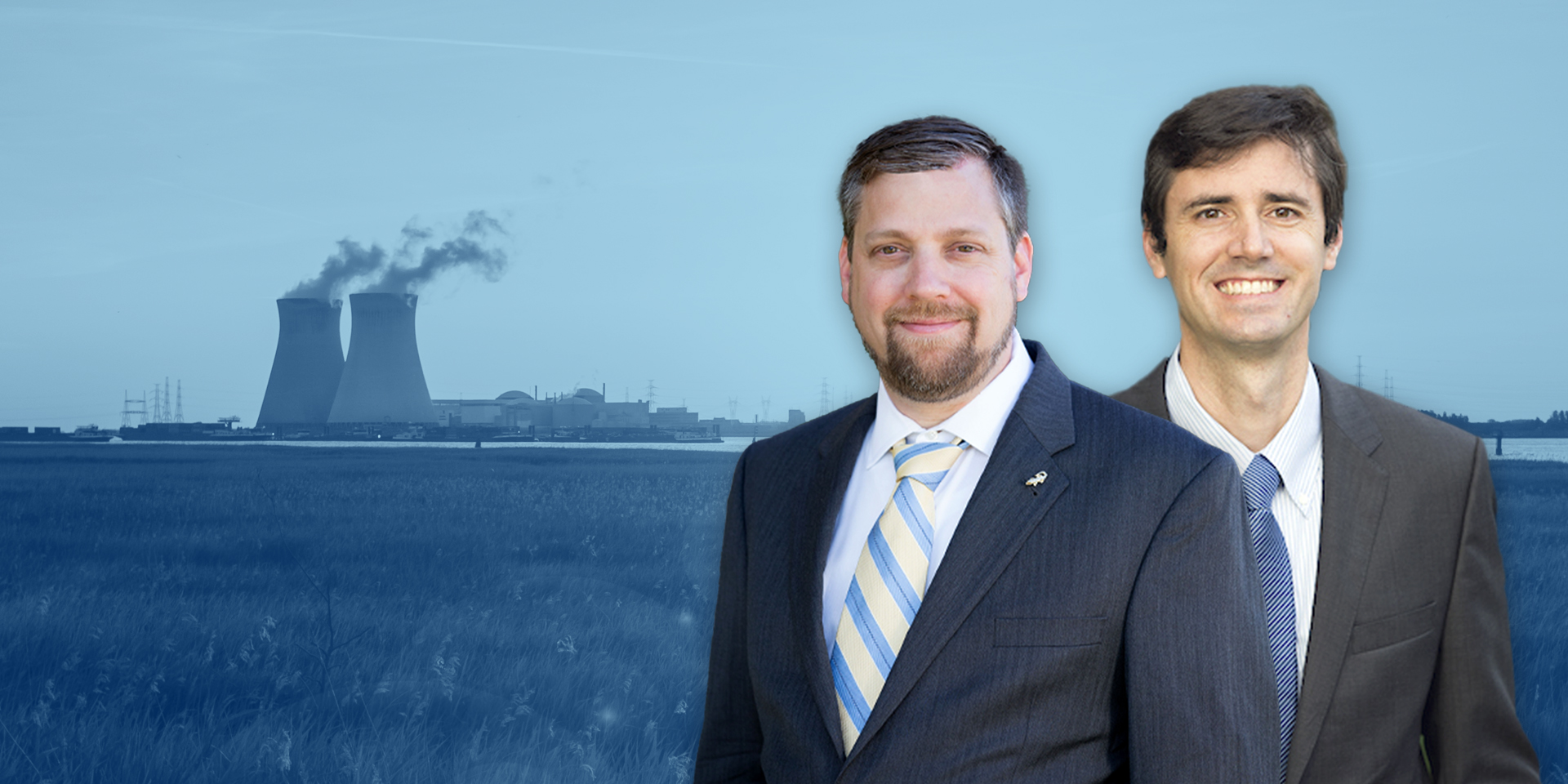As the demand for clean, high-efficiency energy grows, a research team led by Justin Watson, Ph.D., and Chris McDevitt, Ph.D., associate professors of nuclear engineering at the University of Florida, is exploring gas core nuclear reactors (GCRs). This next-generation reactor design could offer a safer and more efficient way to generate atomic power by replacing traditional solid fuel rods with gaseous uranium fuel.
Traditional nuclear power plants have long provided a non-CO2 emitting alternative to fossil fuels. They operate using solid uranium dioxide fuel encased in zirconium alloy rods and cooled by water. While this approach has been effective, it comes with challenges, particularly the risk of fuel melting in extreme conditions.
Gas core reactors take a different approach. Unlike conventional reactors that rely on water as both a coolant and neutron moderator, gas core reactors operate at temperatures high enough to cause the partial or complete ionization of the uranium fuel to form a plasma, enabling innovative confinement schemes to be deployed. This unique configuration allows for continuous fuel cycling, reducing nuclear waste and minimizing plutonium production. This has implications for nuclear security, as it reduces the amount of material that could be repurposed for weapons.
This concept also eliminates the risk of a core meltdown and allows the reactor to operate at much higher temperatures than traditional designs. These higher operating temperatures allow for increased thermal efficiency when generating electricity, or higher temperature propellants for space applications.
If successfully developed and deployed, GCRs could have a broad range of applications beyond conventional electricity production:
- Electric Grid Support: As the electricity demand grows, particularly with the expansion of electric vehicles and energy-intensive AI data centers, GCRs could provide a stable, high-output source of carbon-free energy.
- Process Heat Production: The high operating temperatures of GCR’s make them a prime candidate to supply process heat for industrial applications such as hydrogen production, coal gasification, fertilizer production, etc.
- Space Exploration: The ability to generate and control ultra-high-temperature plasmas makes GCR technology relevant for space propulsion. A nuclear-powered rocket using a gas core reactor could enable faster and more efficient space travel.
- Tritium Production: GCR structures can be lined with materials to bread tritium, a fuel source for fusion reactors.
“Gas core reactors represent a paradigm shift in how we approach nuclear power,” Watson said. “By harnessing the properties of high-temperature plasmas and improving material durability, we can create a safer and more sustainable energy system.”
One of the most significant advantages of GCRs is their potential for higher efficiency. Conventional light water reactors (LWRs) convert about 33% of their generated heat into electricity, with the rest lost as waste heat. GCRs, thanks to their high operating temperatures, could achieve efficiencies above 60%, making better use of the fuel and reducing the overall cost of energy production.
Another key benefit is their fuel cycle. Unlike solid-fuel reactors, which require refueling and produce spent fuel that must be managed, GCRs could operate with a continuous fuel cycle. This means they could burn nuclear fuel more completely, reducing long-term waste. Additionally, GCRs produce significantly less plutonium than conventional reactors, which has implications for nuclear security.
“These are areas we need to study in detail,” Watson said. “If gas core reactors can operate as efficiently as we expect, they could help address some of the major concerns surrounding nuclear energy.”
Despite their promise, GCRs face technical and regulatory challenges. One major hurdle is ensuring the stability of the plasma, as maintaining the reaction within a magnetic field is complex. Material selection is another issue—reactor components must withstand extreme temperatures and radiation over long periods without degrading. Watson and his team are working to overcome these hurdles through advanced computational modeling and experimental validation.
There are also societal and regulatory challenges. Public perception of nuclear power remains mixed, and any new reactor design must undergo extensive testing to ensure safety and environmental responsibility.
“We are at the beginning stages of understanding how to control and optimize these factors,” added Watson. “With continued research and investment, we can help pave the way for a new era of nuclear energy.”
Funding from organizations like the John Hauck Foundation and collaborative efforts with interdisciplinary teams in physics, engineering, and material science are critical in advancing GCR technology. While commercialization remains years away, ongoing research at UF offers a glimpse of tomorrow’s nuclear energy technology.
This Gas Core Reactor research was financially assisted by The John Hauck Foundation, Fifth Third Bank and John W. Hauck, Co-Trustees.

